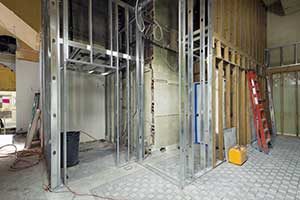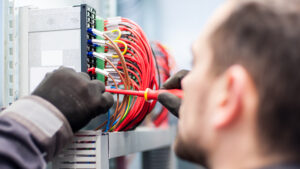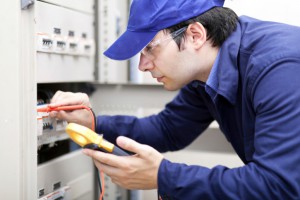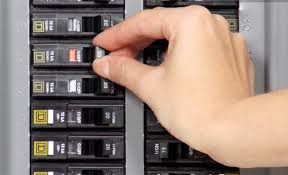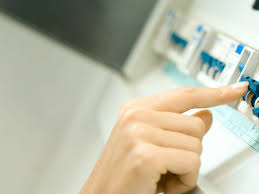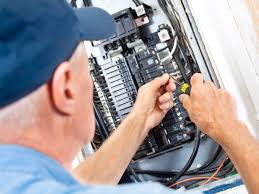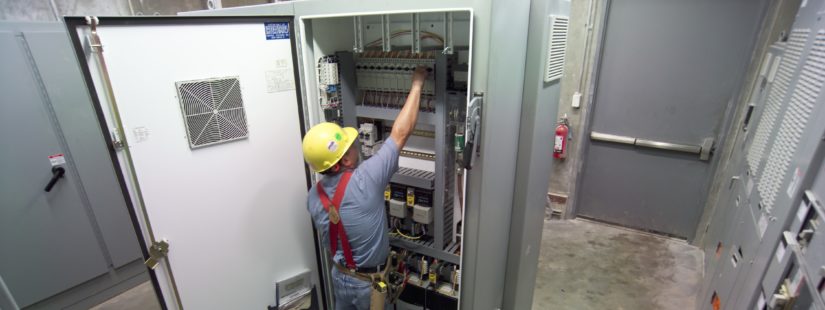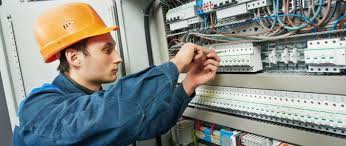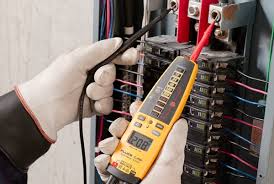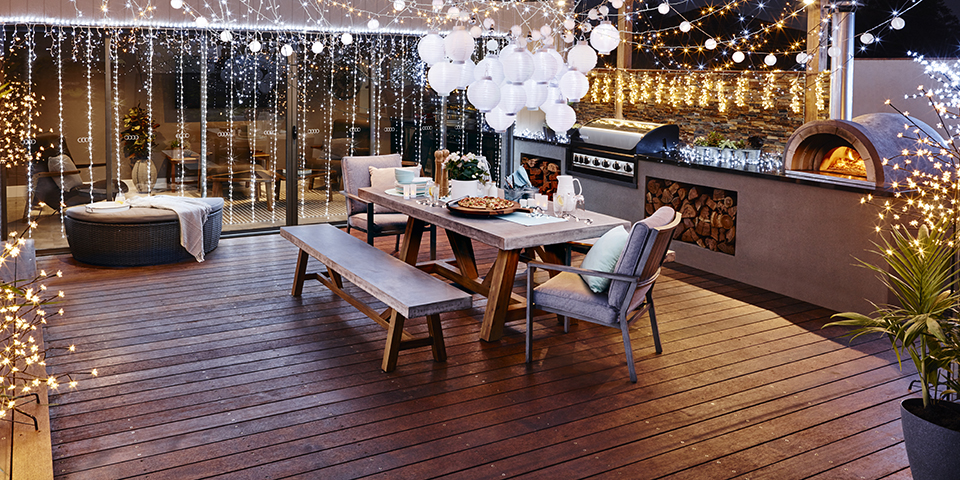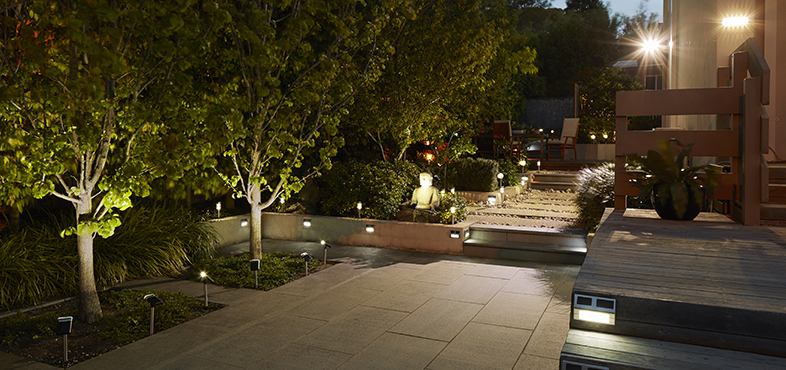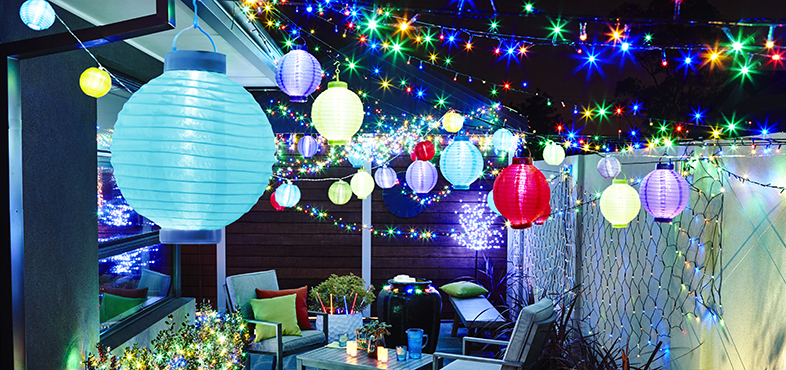The Advantages of LED Lights for the Environment
Taking care of the environment is a responsibility that everyone should feel accountable for. Most of us are already aware of environmentally friendly processes such as recycling to minimise the amount of waste we produce and reduce our carbon footprint. However, a lot of people are unaware of new and upcoming technologies that we can use to help reduce carbon emissions. A good example of this is LED lighting, which provides many environmental advantages.
Energy Efficient
LED lights are up to 80% more efficient than traditional lighting such as fluorescent and incandescent lights.95% of the energy in LEDs is converted into light and only 5% is wasted as heat. This is compared to fluorescent lights which convert 95% of energy to heat and only 5% into light! LED lights also draw much less power than traditional lighting; a typical 84 watt fluorescent can be replaced by a 36 watt LED to give the same level of light. Less energy use reduces the demand from power plants and decreases greenhouse gas emissions.
No Toxic Elements
LED lights contain no toxic elements. Most offices currently use fluorescent strip lights which contain noxious chemicals such as mercury. This will contaminate the environment when disposed of in landfill waste. Disposal has to be arranged through a registered waste carrier so switching to LED avoids the cost and time implications required for compliant disposal – and helps to protect the environment from further toxic waste.
Less Lights Needed
LEDs have a better quality of light distribution and focus light in one direction as opposed to other types of lighting which waste energy by emitting light in all directions, often illuminating areas where light isn’t required (such as the ceiling). This means that less LED lights are needed to achieve the same level of brightness given off by fluorescents and incandescent lights. Fewer lights will reduce energy consumption and will therefore be a benefit to the environment.
Life span
A longer life span means lower carbon emissions. LED Lights last up to six times longer than other types of lights, reducing the requirement for frequent replacements. This results in using fewer lights and hence fewer resources are needed for manufacturing processes, packaging materials and transportation.
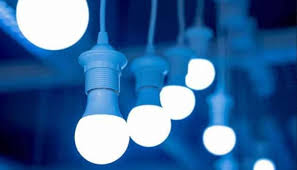
How to Calculate LED Power
When working with LED lighting, particularly when those LEDs are part of a battery-powered project, it may be important to calculate the power use of your LEDs in the circuit. This is a simple task with a multi-meter capable of measuring current, resistance and voltage, but if you lack one, it is possible to estimate the LED’s power use by consulting the packaging and manufacturer’s sheets that came with the LEDs. You only need to find the current and the voltage of your LED.
Calculating the power use of LED lighting is a critical step for any battery-powered electronics project, and thankfully it is simple to do. To calculate LED power, you’ll need to know your LED’s current and voltage, which you can find either through the use of an electrical multi-meter or by consulting the packaging and manufacturer’s materials. LED power is calculated by multiplying the LED’s current by its voltage. Be careful when working with electrical circuits and currents, even when measuring them.
Finding Voltage
The first step to calculating an LED’s power use is to determine the LED’s voltage. If you do not have a multi-meter on hand, look at the manufacturer’s data sheet and find the typical forward voltage of the LED unit, or measure it with your multi-meter while the LED is powered on. Alternatively, you can estimate the voltage based on LED color. White LEDs tend to have a voltage of 3.5, red has 1.8 volts, blue has 3.6 volts, and 2.1 volts for a green, orange or yellow LED.
Determining Current
Once you’ve taken note of your LED’s voltage, you will need to determine the current. This can be measured directly with a multi-meter to determine the exact value, but the manufacturer’s materials should offer a rough estimate of typical current. Once you have this value, you can very quickly and very easily calculate the power use of your LEDs.
Calculating LED Power
To calculate an LED’s power use, simply multiply the LED’s voltage (in volts) by the LED’s current (in amperes). The result, measured in watts, is the amount of power your LEDs use. For example, if your LED has a voltage of 3.6 and a current of 20 milliamperes, it will use 72 milliwatts of power. Depending on the size and scale of your project, your voltage and current readings may measure in smaller or larger units than the base ampere or watt, and unit conversions may be necessary. When doing these calculations, remember that 1000 milliwatts is equal to one watt, and 1000 milliamperes is equal to one amp.
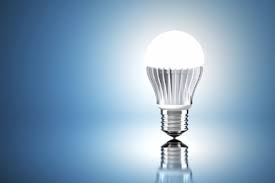
HOW TO STOP LED LIGHTS GLOWING WHEN OFF: ULTIMATE GUIDE
Learn the ropes on how to stop led lights glowing when off by using some materials that you can easily find at home.
You might notice that LED lights tend to stay or at times dim even when the off switch has been toggled. This is usually due to the residual current left behind. If you want to know how to stop led lights glowing when off, you might want to follow some of these key steps in addressing them.
Leading Causes
Before learning how to stop LED lights glowing when off, you might need to find out what can cause them to do so. This is more of a problem found in the electric current, especially if the lights themselves are of poor quality. Bulbs are not affected, but the current may be affected due to a neutral wire within the circuit that did not bond with the earth. Alternatively, there may be an electric pick-up along the cable wires caused by electromagnetic induction. Any of these could cause the bulb to glow brightly.
How to Fix the Problem?
Each of the steps outlined here is a choice you can follow to learn how to stop LED lights glowing when off. If Solution 1 does not work, you can go to Solution 2 and so on. Try as much as you can to ensure that the problem is resolved without causing any accidents. However, the advice of an electrician must always be sought first before you can do this on the first try, unless you can manage on your own.
Materials Needed
To prepare for the task at hand, you must buy or acquire the following:
- Screwdriver
- Extra light bulbs
- Neon indicator lamps
- Zener diodes
- CFL (Compact fluorescent lamp)
SOLUTION 1: REPLACE THE BULB.
Usually, replacing the bulb is the best way to solve it. Replacing it with the same LED bulbs, however, might not always solve the problem right away since the bulb could still glow even after it has been removed and replaced. So, try looking for some trusted brands of light bulbs that have been tested well enough to not experience the same problem.
SOLUTION 2: SET UP THE EARTHED WIRING OR ZENER DIODES
The glowing could be caused by the wiring not being earthed or grounded well. This can be remedied by placing a Zener diode. The diode regulates the circuit’s voltage and blocks any charge if you turn off the bulb. These diodes can be easily installed and are rather cheap. If you want to know how to get a Zener diode online.
SOLUTION 3: USE A CFL TO SEEP THE EXTRA VOLTAGE AWAY.
You could also try soaking up the unwanted voltage by putting an object in the circuit, but the ideal approach would be to make use of a CFL, which is short for Compact Fluorescent Lamp. There are better and safer options, but this can be a useful solution to the problem, if it works.
SOLUTION 4: MAKE USE OF A NEON INDICATOR
One effective way to address this issue is buying a neon indicator. These indicators can be bought on Amazon, and they give excellent results. A prewired lamp can help. Connect the indicator between the neutral and lone where the downlights end at a string. This way, the indicator can soak the excess charge. What will happen is that the indicator will glow in place of the original bulb. Check the voltage that the indicator can manage.
If you don’t want to buy indicators, you can find them in appliances like refrigerators. Just use a screwdriver to take them out. Look for old models and get the indicators from there so that you can save up on a little money and make the most of a beat-up appliance. These indicators can still be used for years to come even when they diminish in terms of power.
SOLUTION 5: TALK TO THE MANUFACTURER OF THE LED LAMP
The light might have some smart led light switch, which operates by letting a small bit of current pass through the bulb until it returns to neutral. They require power due to the teach dials that help it stay on for any dimming commands. The current slips past the lamp’s filament that will not cause a glow, though there might be a reaction found in LED lamps; this could be the cause of the glow. If this happens, consult the manufacturer of the lamp. You can also contact an electrician to help you out.
Now that you know how to fix the issue, you can rest easy knowing that the problem can actually be solved quick and easy.
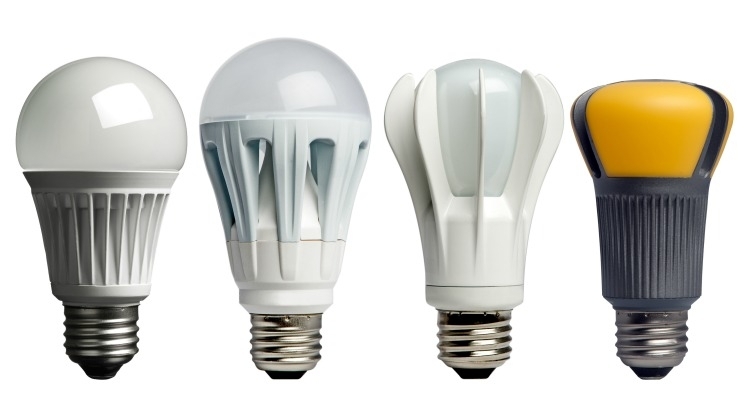
How To Stop LED Lights from Glowing When Off?
Solution 1: Change bulb
If your bulb is glowing after you have replaced your incandescent bulbs with LED ones, you may try buying a replacement from a reputable brand and replace the glowing ones with that. If it stops glowing then you can replace the others.
Often, the type of bulb you may have installed may be incompatible with the installation in the home leading to the glow or flicker.
Solution 2: Make sure wiring is earthed or Install a Zener diode
An electrician will be in a position to tell you whether the glowing is caused by the wiring not being properly earthed and fix this for you if so. This is very easy to fix. If the glowing due to the cabling being too close, you could ask the electrician to set up a Zener diode which will regulate the voltage of the electricity circuit your glow led is on. This Zener diode will block any residual voltage coming from the circuit. It should not take an electrician long to install the Zener diode. The diode itself costs a couple of dollars so it should be a straightforward and affordable job.
Solution 3 Use CFL or stick something else to soak the extra voltage
One solution to this conundrum could be trying to stick something in the circuit to soak up this unwanted voltage. Using a CFL or incandescent lamp in one fitting [if a multiple lamp/down light configuration] should mop it up even though this is not the ideal solution. It may work for you as a temporary measure as you try to resolve the problem using other safer and more lasting solutions.
Solution 4: Get a Neon Indicator
Another way to solve the problem is to get a neon indicator. You can search for this from Amazon or any other reliable electronics supplier and you will get good results for a couple of dollars. Get a prewired one with flying leads to save you the trouble of any messes. You should install the indicator between the lone and neutral at the fitting or at the end of a string of downlights so it can soak in all the unwanted current. The neon will then glow instead of the bulb and it can be tucked away from sight.
Make sure that the neon you select is compatible with the current voltage you have at your home. You can get neon indicators from kitchen appliances such as freezers, fridges and kettles. This is an easy task to accomplish if you are a handy man with the help of a screw-driver. Take advantage of the goods that have already reached their end of life as good indicators will still burn for years losing brightness over time but still functioning.
Solution 5: Try a neutral with lamp or talk to your LED lamp’s manufacturer
You could be using dimmers or smart switches such as illuminated, touch sensitive or WIFI-enabled models that are most are neutral. The clever circuitry in such switches operates by passing a tiny current through the bulb then back to neutral. This current will pass all the time keeping the switch on even when the lights are off. These types of switches will need power all the time because they have touch dials, indicator lights or use a WiFi bridge to connect or need to stay on for any on or off dimming commands.
While this is happening, a small current passes through the filament of the incandescent lamp will not make it glow butt with LED lamps, there may be some reaction causing the glow. If you have smart light switches and find that your LED lights are glowing when switched off, you may need to consult your manufacturer to find a switch that is compatible with the lamps. The other option is to call an electrician to run a dedicated neutral to the switch you have installed in your home (if it can support one) so that it does not go through the lamp.
Solution 6: Work with other lamps
When all is done and nothing seems to work, you may try matching your LED bulb to other lamps. Some dimmable LED lamps to work better than others and sometimes mixing in an odd lamp can have positive effects.
Solution 7: Inspection
As previously stated, problems can arise from unwanted voltage on your wiring due to induction from neighboring circuits. It is not unusual for one to place a tester on a dead circuit and still get a few volts which maybe have been inducted into the circuit or are getting in through poor insulation resistance from adjacent wiring. If your wiring is old or has not been checked lately then you should consider having it inspected to see how your lighting is behaving.
LED Lighting
The light-emitting diode (LED) is one of today’s most energy-efficient and rapidly-developing lighting technologies. Quality LED light bulbs last longer, are more durable, and offer comparable or better light quality than other types of lighting. Check out the top 8 things you didn’t know about LEDs to learn more.
Energy Savings
LED is a highly energy efficient lighting technology, and has the potential to fundamentally change the future of lighting in the United States. Residential LEDs — especially ENERGY STAR rated products — use at least 75% less energy, and last 25 times longer, than incandescent lighting.
Widespread use of LED lighting has the greatest potential impact on energy savings in the United States. By 2027, widespread use of LEDs could save about 348 TWh (compared to no LED use) of electricity: This is the equivalent annual electrical output of 44 large electric power plants (1000 megawatts each), and a total savings of more than $30 billion at today’s electricity prices.
How LEDs are Different
LED lighting is very different from other lighting sources such as incandescent bulbs and CFLs. Key differences include the following:
- Light Source: LEDs are the size of a fleck of pepper, and a mix of red, green, and blue LEDs is typically used to make white light.
- Direction: LEDs emit light in a specific direction, reducing the need for reflectors and diffusers that can trap light. This feature makes LEDs more efficient for many uses such as recessed downlights and task lighting. With other types of lighting, the light must be reflected to the desired direction and more than half of the light may never leave the fixture.
- Heat: LEDs emit very little heat. In comparison, incandescent bulbs release 90% of their energy as heat and CFLs release about 80% of their energy as heat.
LED Products
LED lighting is currently available in a wide variety of home and industrial products, and the list is growing every year. The rapid development of LED technology leads to more products and improved manufacturing efficiency, which also results in lower prices. Below are some of the most common types of LED products.
Industrial and Commercial Lighting
The high efficiency and directional nature of LEDs makes them ideal for many industrial uses. LEDs are increasingly common in street lights, parking garage lighting, walkway and other outdoor area lighting, refrigerated case lighting, modular lighting, and task lighting.
Kitchen Under-Cabinet Lighting
Because LEDs are small and directional, they are ideal for lighting countertops for cooking and reading recipes. The color can appear more cool or blue than is typically desirable in a kitchen, and there can be some excessive shadowing in some fixtures, so it is important to compare products to find the best fixture for your space.
Recessed Downlights
Recessed downlights are commonly used in residential kitchens, hallways, and bathrooms, and in a number of office and commercial settings. DOE estimates there are at least 500 million recessed downlights installed in U.S. homes, and more than 20 million are sold each year. Both CFL and LED technology can decrease downlight wattage by 75% or more.
LED Replacement Bulbs
With performance improvements and dropping prices, LED lamps can replace 40, 60, and even 75 Watt incandescent bulbs. It’s important to read the Lighting Facts Label to make sure the product is the right brightness and color for the intended location. When chosen carefully, LED replacement products can be an excellent option.
LED Holiday Lights
LEDs consume far less electricity than incandescent bulbs, and decorative LED light strings such as Christmas tree lights are no different. Not only do LED holiday lights consume less electricity, they also have the following advantages:
- Safer: LEDs are much cooler than incandescent lights, reducing the risk of combustion or burnt fingers.
- Sturdier: LEDs are made with epoxy lenses, not glass, and are much more resistant to breakage.
- Longer lasting: The same LED string could still be in use 40 holiday seasons from now.
- Easier to install: Up to 25 strings of LEDs can be connected end-to-end without overloading a wall socket.
